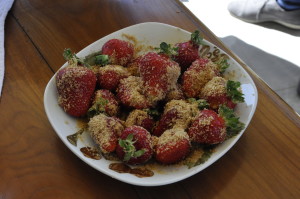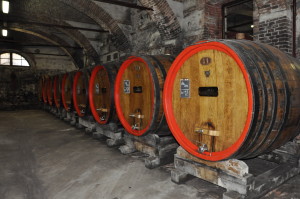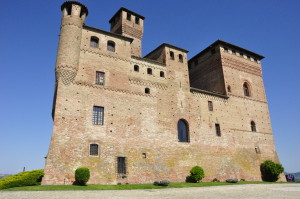An international press trip to Italy’s Piedmont region took place on May 16-18 in Alba, the unofficial capitol of the area.
Located at the northwestern-most tip of the country, Piedmont may be somewhat less well-known than Tuscany, its far more famous neighbor just to the south, but it is a stunningly beautiful area of the country in its own right, abundant in as many scenic, historic, architectural, and—perhaps most especially—culinary riches as anywhere in Italy (or the world, for that matter). What other tiny geographical region can list some of the world’s finest wines such as Barolo and Nebbiolo; black and white truffles, the world’s most expensive mushrooms; Ferrero chocolates; and numerous cheeses including Bra, Murazzano, Raschera, and Robiolo di Roccaverano, all under the designation of “D.O.P” (protected designation of origin). Perhaps no other country in the world takes as much pride in its food and wine as Italy, and the brief tour through the region provided many “faces” to the names of products with which so many people are familiar the world over.
The weekend took place in the Langhe region, halfway between the snowy alps to the north and the Mediterranean to the west, where visits to some of the world’s most famous wineries and food producers included an hour or so spent at a hazelnut farm, the little round nut that forms the basis for Gianduja chocolate. The exacting and extremely slow process of hand-picking the finest hazelnuts one by one explains both their cost and popularity as a gourmet item to be sprinkled on a wide variety of foods, including strawberries, prosciutto, and other Italian delicacies. Moreover, the weekend included a 50th birthday celebration of one of Piedmont’s most famous exports: Nutella. The wildly popular, creamy hazelnut-chocolate spread was the focus of a huge festival on May 17 that took place in Alba’s huge town square. Thousands of people, locals and tourists alike, gathered together to listen to a noisy, happy gospel concert, while restaurants and cafés spilled out onto the streets in a joyous celebration of this often-imitated but still unequaled specialty food, as popular with adults as it is with children.
Alba is also the capital of truffles—the fabulous, wildly expensive tubers that come from under the ground and are prized by top chefs and food aficionados everywhere—and they have their own festival in the fall, when the season for digging them out from underground, with the help of trained dogs, reaches its peak. Their earthy, unique aroma is best savored in the simplest of ways—shaved on some simple pasta with butter, for example, or sprinkled into scrambled eggs for a special treat. While black truffles are somewhat easier to find, it’s the rare, white truffle that is most prized.
Like much of Italy, Piedmont is an area dotted with literally hundreds of exquisite small towns, each with its own quirky character and special personality. First-time tourists to Italy can do no better than to rent a car and take day trips to one village or another. There are no disappointments to be had anywhere; they’re all breathtaking.
Piedmont’s gentle hills are dotted with ancient churches, monasteries, convents and castles, a number of which were included on the tour. Towns such as Barolo, Grinzane Cavour, and Santo Stefano Belbo are all short driving distances from one another. Hills as far as the eye can see are lined with meticulously laid-out vineyards, their rows so straight one might have plotted them out with a ruler. Barolo is, of course, the king of the wines produced in Piedmont, but the list of other, equally famous and delectable brands such as Barbaresco, Nebbiolo, Dolcetto, Barbera and Moscato truly forms an astonishment of riches.
Accommodations in Piedmont are sometimes scarce in the summer months; in the spring, however, when the weather is glorious and the surrounding landscape is redolent with the scent of thyme, rosemary, sage, and a huge variety of roses, there are plenty of spaces to be had, with almost no crowds. Now’s the time to go! Hotels are frequently pristine restorations of ancient farmhouses, castles and towers, and they are a warm, intimate and welcome change from the glass towers found in so many of the world’s large cities. They do not exist in Piedmont, and that’s all to the good. The Hotel Villa d’Amelia, a short drive from Alba, is a perfect example of a meticulously restored historical building, and with its superb restaurant (rated one star by the famed Michelin guide) and excellent contemporary facilities, it’s a wonderful place to stay.
Discover Langhe Roero, www.langheroero.it/index.jsp?idProgetto; Relais Villa D’amelia, www.villadamelia.com




